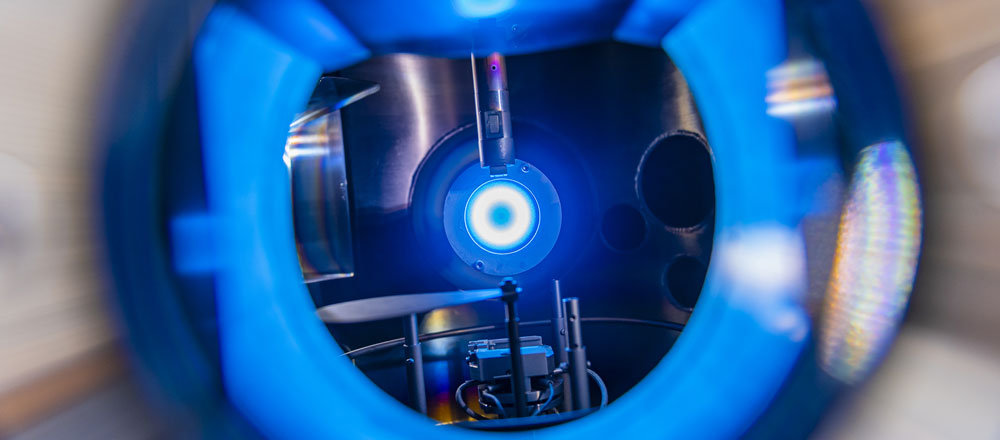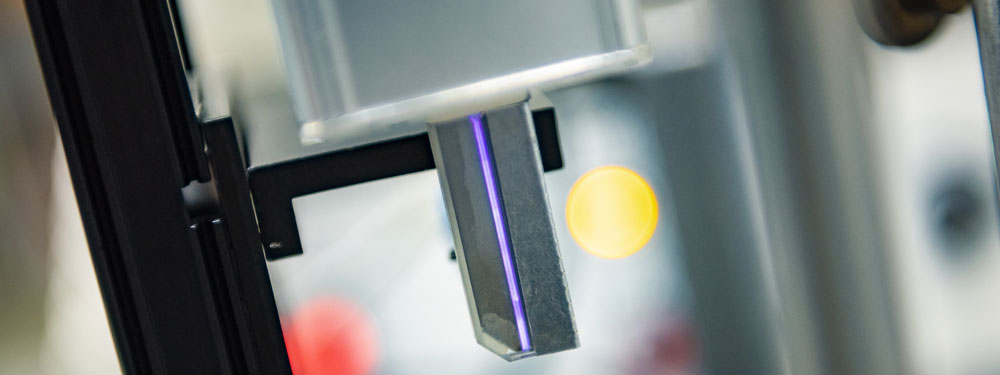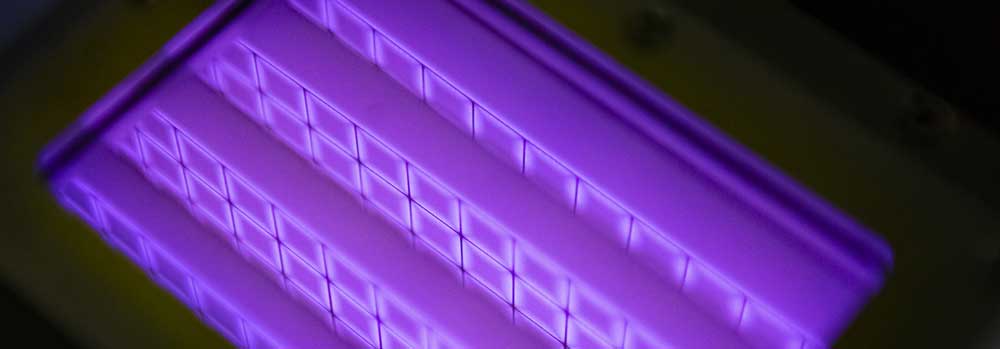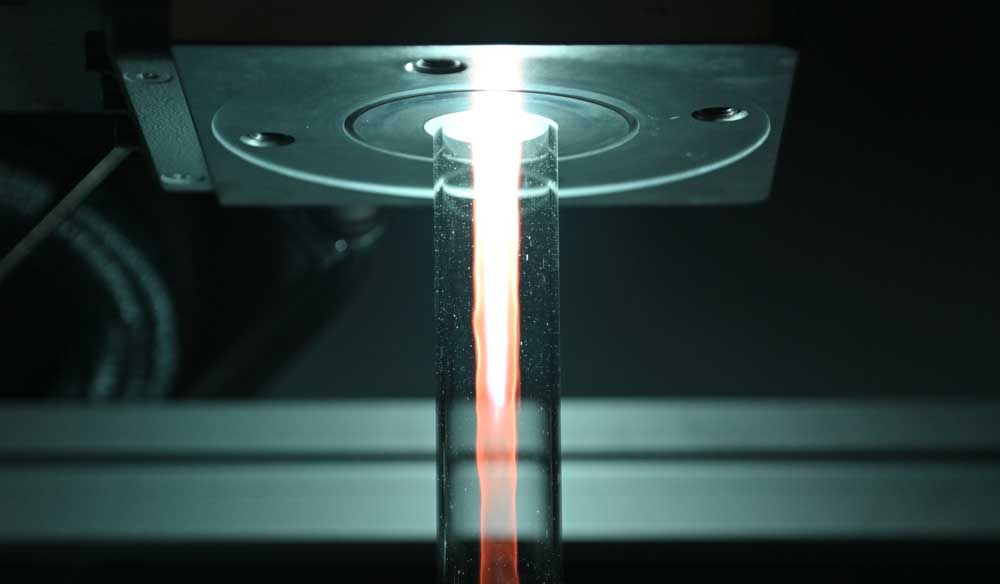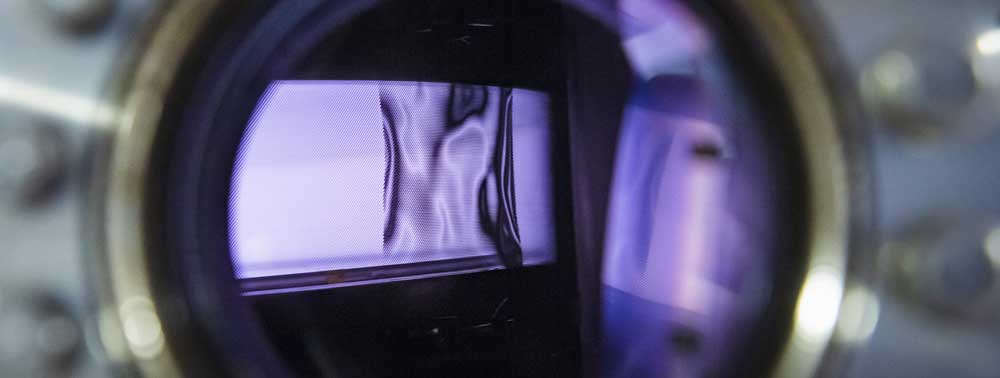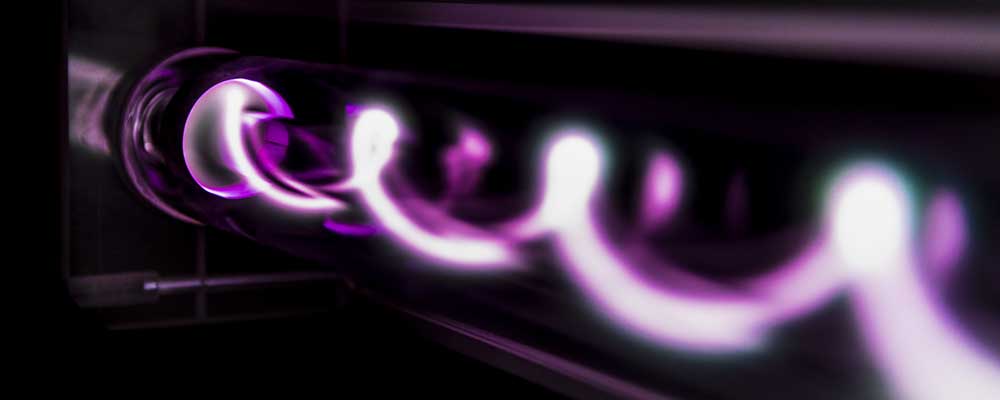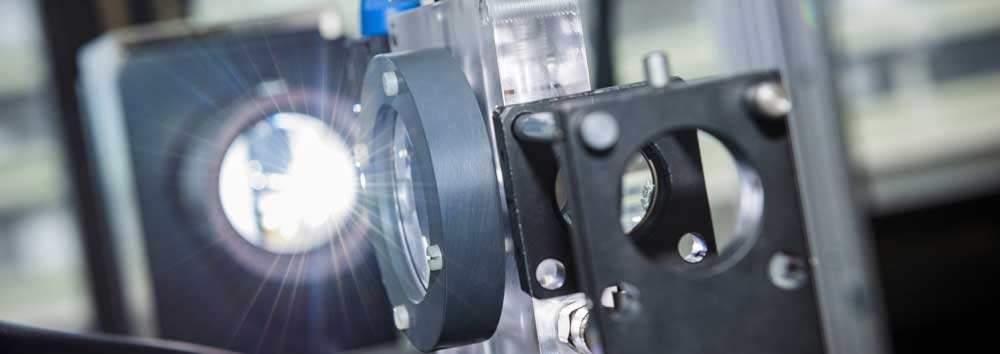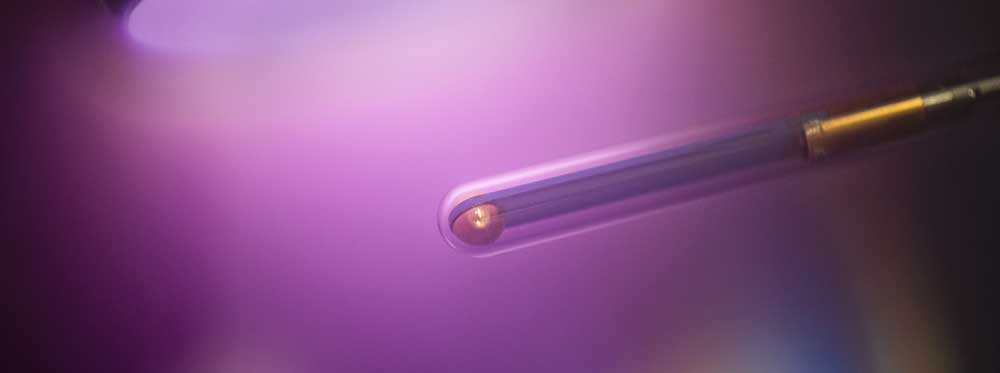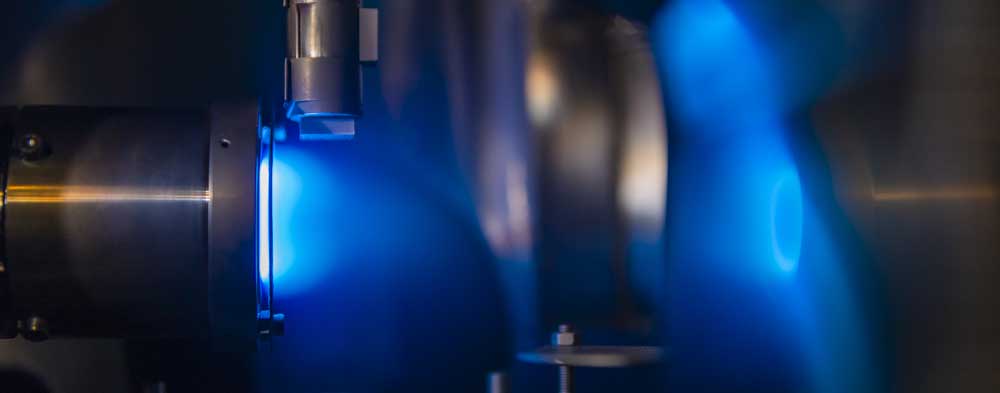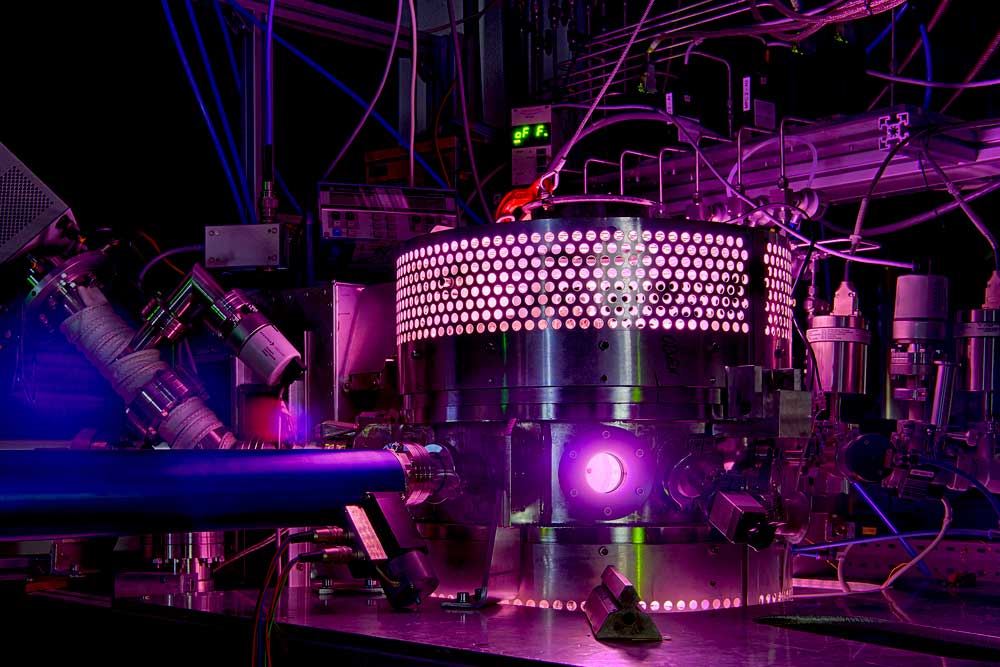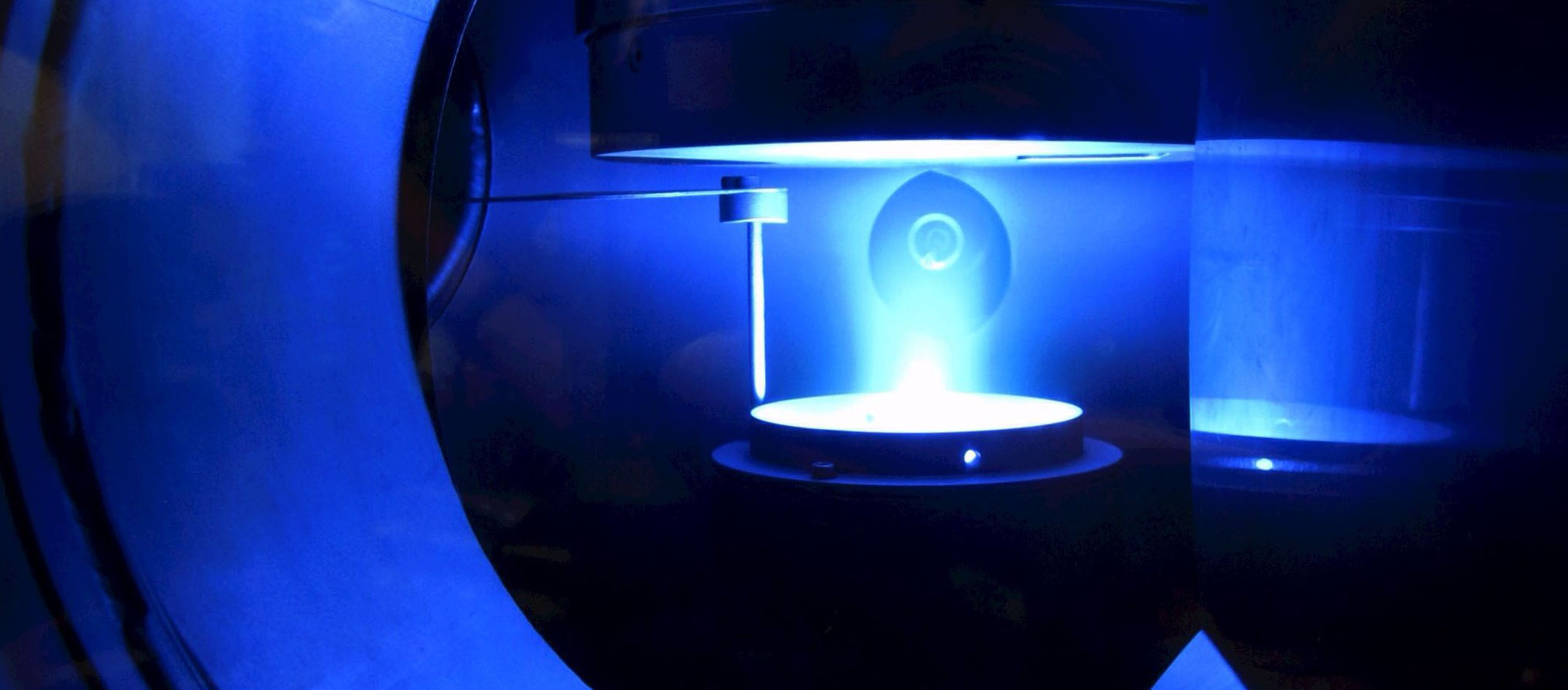Multi Resonance Probe/Plasma Absorption Probe
The head of the Multipole Resonance Probe (MRP) consists of two metallic hemispheres working as electrodes of a small antenna and separated by a dielectric layer. The head’s diameter is 6 mm and is enclosed by a dielectric tube (thickness of 1 mm) which is immersed in the plasma. This makes the probe insensitive against ceramic coatings which is needed in many applications. A self-developed electronic or, as an alternative, a network analyzer feeds an rf signal sweep to the antenna and displays the frequency dependence of the power absorption. This method is known as active plasma resonance spectroscopy (APRS). From the absorption spectrum the value of the electron density is calculated. In comparison to other APRS probes, the MRP shows a geometrical and electrical symmetry which significantly decreases the complexity of the model. The measurement range of the electron density is between 1013 m-3 and >1018 m-3. Time resolution lies in the range of sub ms, depending on the used electronic.
The plasma absorption probe (PAP) was invented as an economical and robust diagnostic device to determine the electron density distribution in technical plasmas. It consists of a small antenna enclosed by a dielectric tube which is immersed in the plasma. A network analyzer feeds a rf signal to the antenna and displays the frequency dependence of the power absorption. From the absorption spectrum the value of the electron density is calculated. The original evaluation formula was based on the dispersion relation of plasma surface waves propagating along an infinite dielectric cylinder. In this letter the authors present the analysis of a less idealized configuration. The calculated spectra are in good qualitative agreement with their experimental counterparts, but differ considerably from those predicted by the surface wave ansatz. An evaluation scheme which takes our findings into account will improve the performance of the PAP technique further.
The measurement range of the electron density is between 1014 m-3 and 1018 m-3. Time resolution lies in the range of sub ms.

